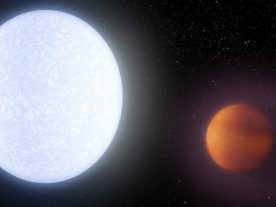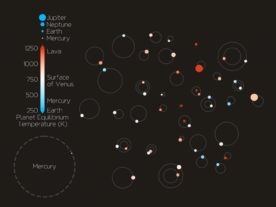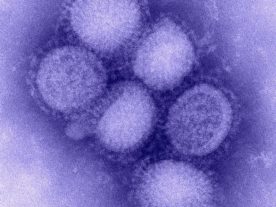A chemist in the northwestern U.S. state of Washington has taken some of the technology behind Google’s powerful Internet search engine and has applied it to chemistry.
Aurora Clark, associate professor of chemistry at Washington State University, along with colleagues from the University of Arizona, recently took Google’s PageRank software and adapted it to create a software package for chemists.
MoleculaRnetworks, the new software, allows chemists to determine various molecular shapes and chemical reactions without the added expense and logistics of traditional laboratory experimentation.
Also, by using this software, the chemist can work in a safer environment and avoid the occasional dangers of lab-based experiments.
Google’s PageRank is a web analysis algorithm which was developed at Stanford University.
PageRank analyzes the trillions of Web pages on the Internet and then assigns a PageRank or a numeric ranking, which indicates how important a particular Web page is.
That “importance” is based upon how many links, or hyperlinks, point to a particular Web page.
Consequently, when you run a Web search on Google, it lists results according to their page rank, giving you the most important Web pages that best fit your search query.
According to Clark, it was Barbara Mooney, a student doing research in her laboratory, who brought PageRank technology to the team’s attention.
Having done work with a computer programming language called “R”, which contains a PageRank module, Mooney suggested the Google algorithm might be able to provide an analysis of the chemistry in the models and systems the team was looking at.
The moleculaRnetworks software, developed by Clark’s research team, focuses on what chemists call hydrogen bonds – the attraction of hydrogen atoms to other atoms like nitrogen, oxygen or fluorine – in water, earth’s most plentiful solvent.
Water plays a significant role in almost every biological process and can perform key functions in living things.
But, Clark noted these processes can be incredibly complicated, are constantly changing within fractions of a second, and can assume countless possible forms.
As Clark explains it, when their software is performing its analysis, it treats various intermolecular interactions in the same way Google’s PageRank treats Web page hyperlinks.
This allows the chemists to take a “snapshot” of how hundreds of thousands of molecules are interacting with one another.
Clark’s work as a computational chemist mostly centers on heavy, toxic metals, such uranium, plutonium and lead, and how they travel through the environment.
Water, of course, is a major part of the environment and Clark is interested in how those metals behave in water, including its reactivity.
The way water organizes around a particular metal determines its reactivity.
According to Clark, the PageRank technology that was applied to their moleculaRnetworks software was very good at describing water’s organizational features and providing an instantaneous view of all the activity, which allowed her to determine the metal’s reactivity.
In the future, Clark and her team hope the software can help scientists design drugs, investigate various diseases and analyze radioactive pollutants.
Professor Aurora Clark joins us this weekend on the radio edition of “Science World.” Professor Clark tells us how one student’s idea sparked the development of the software, as well as how it could help chemists make new advancements. Tune in (see right column for scheduled times) or check out the interview below.
[audio://blogs.voanews.com/science-world/files/2012/02/One-On-One-Professor-Aurora-Clark-moleculaRnetworks.mp3|titles=One On One – Professor Aurora Clark – moleculaRnetworks]Other stories we cover on the “Science World” radio program this week include:
- NASA reflects on past, plans for Mars
- Rotation of Venus might be slowing
- New findings on Alzheimer’s raise hopes for treatment, cure
- Indian authorities relocate village to protect tigers
- West Africa’s mounting e-waste problem
- Mosquito flight paths help target malaria prevention























Comments are closed.